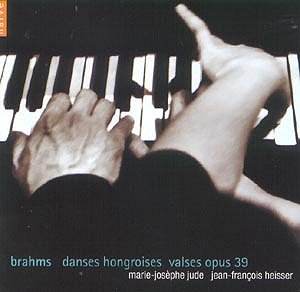 Composer: Johannes Brahms
Composer: Johannes Brahms
Works: Motets Op. 29, Op. 74; Max Reger – Three Motets Op. 110
Performers: Tapiola Chamber Choir, Juha Kuivanen, conductor
Recording: Recorded at Olari Church, Finland in November 1996 and May 1997
Label: TELDEC APEX 0927 40605 2
The motet, as a form, has a rich history that predates even the Baroque era, yet it found renewed vigor in the 19th century through composers like Brahms and Reger, who were deeply influenced by earlier masters, especially J.S. Bach. Brahms’s motets, particularly the pairs featured here from Op. 29 and Op. 74, reflect a complex interplay of traditional chorale elements and intricate counterpoint, firmly rooted in the Protestant liturgical practice. The first motet, “Es ist das Heil uns kommen her,” exudes a robust architectural clarity, a testament to Brahms’s mastery of fugal technique and choral writing. The work’s opening chorale is both familiar and refreshingly harmonized, setting a strong foundation for the subsequent fugal development.
The Tapiola Chamber Choir, under the direction of Juha Kuivanen, showcases a commendable blend of sound, with a keen sense of pitch and balance that often eludes larger ensembles. Their execution of “Schaffe in mir, Gott” exemplifies the choir’s ability to navigate the canonic intricacies with precision. The opening canon in augmentation, with its tender interplay between the sopranos and basses, is rendered with an admirable sensitivity that highlights the intimate nature of the text. Yet, while the Brahms motets largely shine in this performance, the Reger motets present a more formidable challenge. Reger’s Op. 110, with its chromatic complexity and dense contrapuntal textures, tests the choir’s mettle. In “Ach Herr, strafe mich nicht,” the choir occasionally struggles with the rapid chromatic shifts, resulting in moments where clarity is compromised. However, they ultimately convey the emotional depth inherent in Reger’s writing, particularly in the poignant “Mein Odem ist schwach,” where the resolution into a unifying chorale is executed with heartfelt expressiveness.
The recording quality deserves particular mention, as the natural acoustics of Olari Church enhance the overall listening experience. The resonance provides an ambiance that complements the choral sound, allowing for an even distribution of voices, which is critical in works that rely heavily on contrapuntal interplay. The engineering captures the warmth of the choir without sacrificing the clarity of individual lines, a balance that is crucial in both Brahms and Reger’s intricate compositions.
In a competitive landscape featuring celebrated recordings by the Corydon Singers and the RIAS Chamber Choir, the Tapiola Chamber Choir’s performance stands out for its blend of youthful vigor and thoughtful interpretation. While they may not always match the technical acuity of their peers in the Reger motets, the ensemble compensates with a genuine engagement with the music and a palpable connection to the text. This recording, thus, presents a compelling case for the enduring relevance of both Brahms and Reger’s motets, offering listeners an insightful exploration of their choral musical legacy. The Tapiola Chamber Choir’s efforts, under Kuivanen’s thoughtful direction, ultimately reveal the profound beauty and complexity of these works, making it a worthy addition to any choral repertoire.



